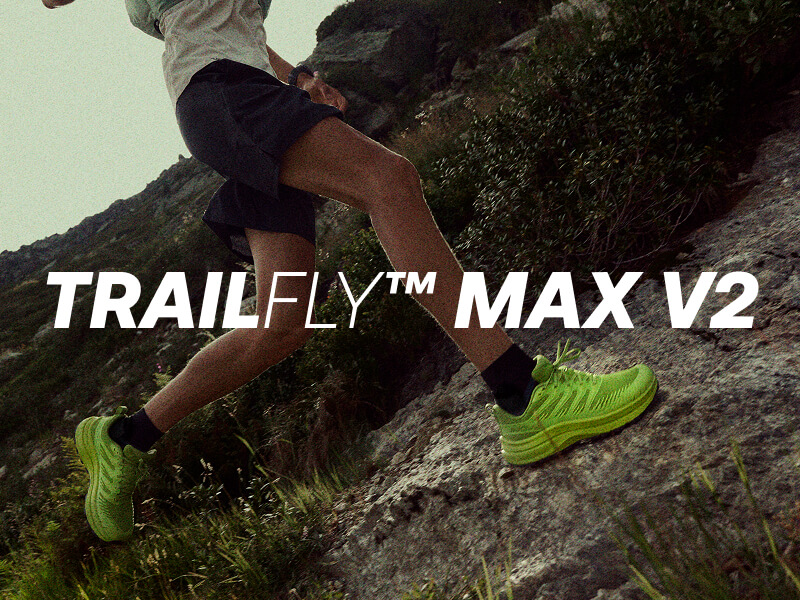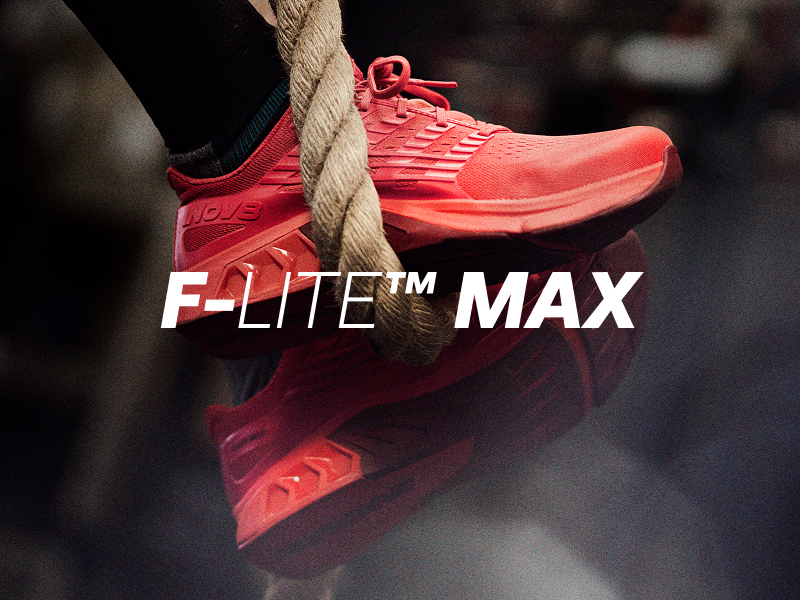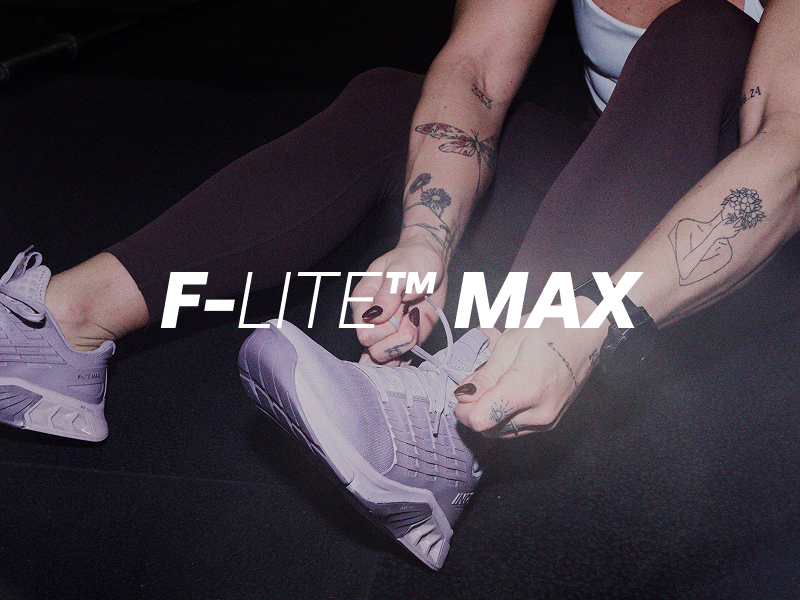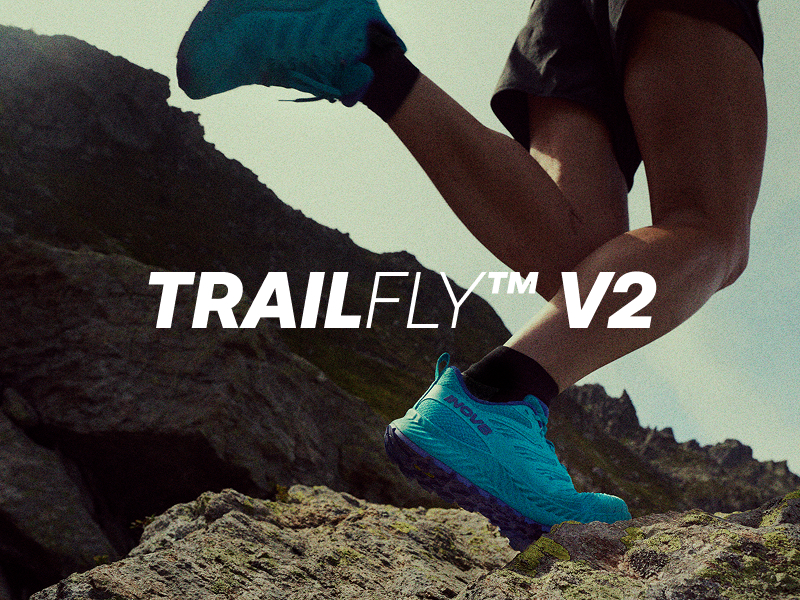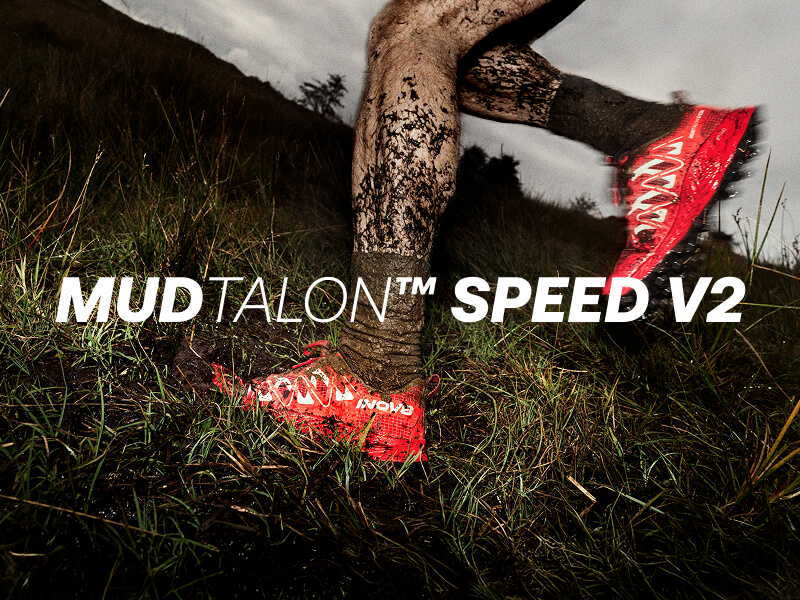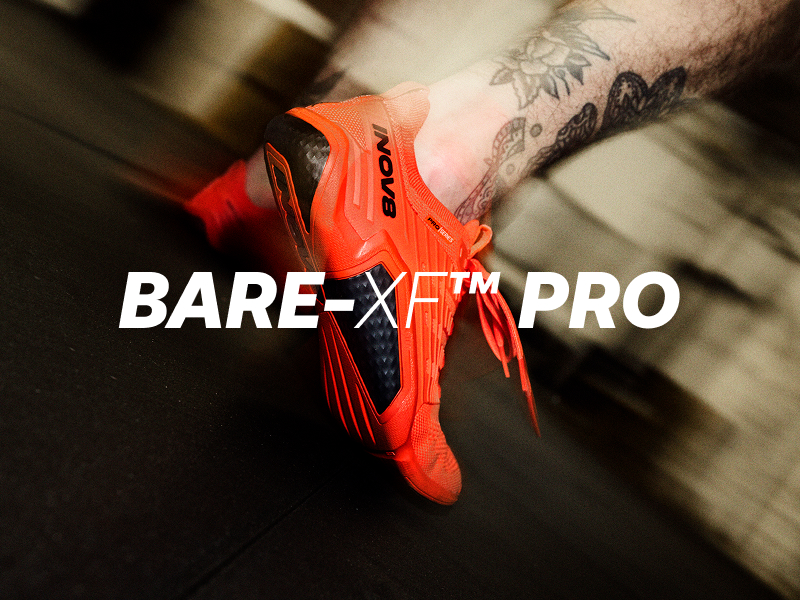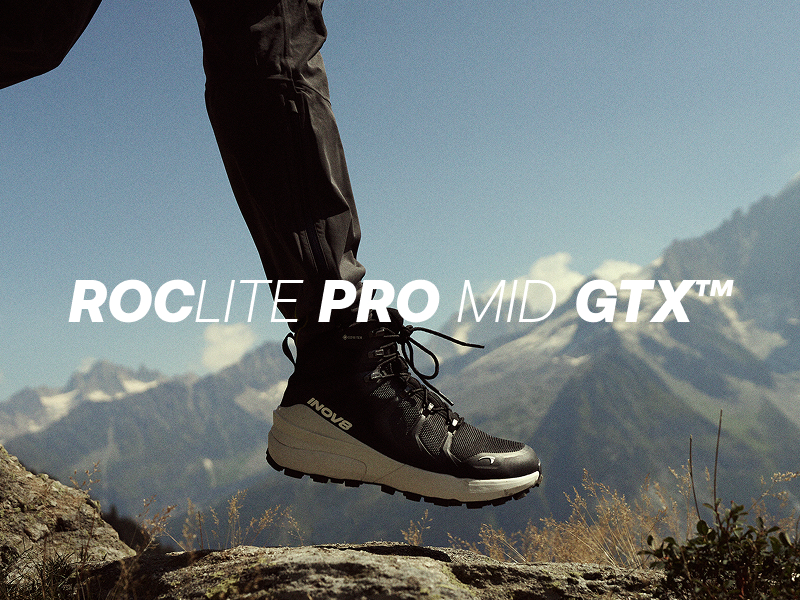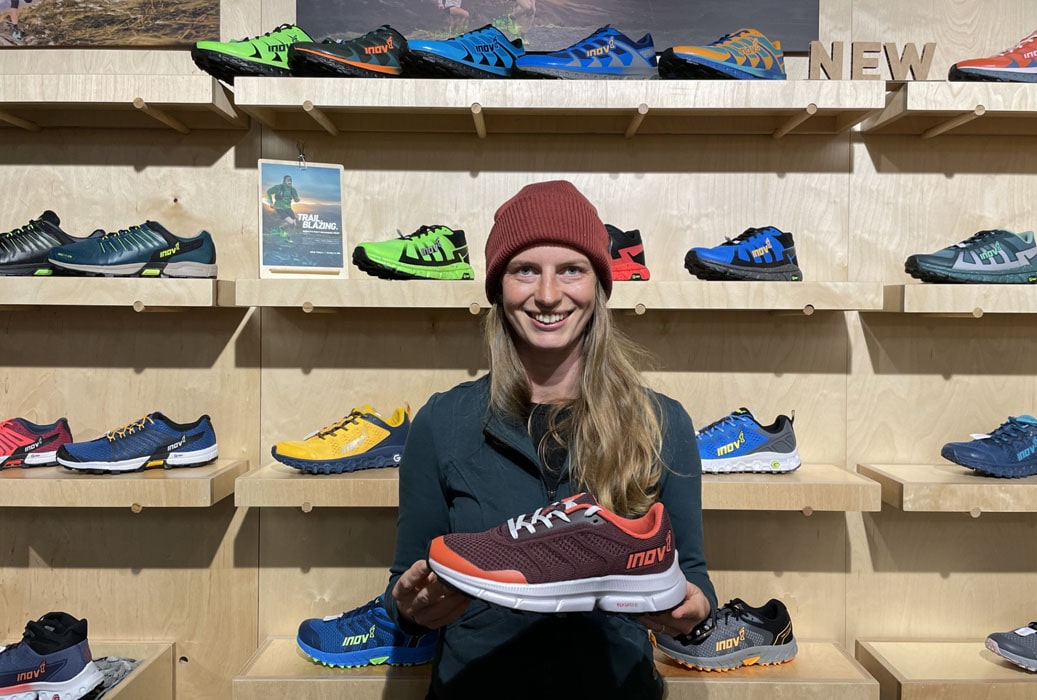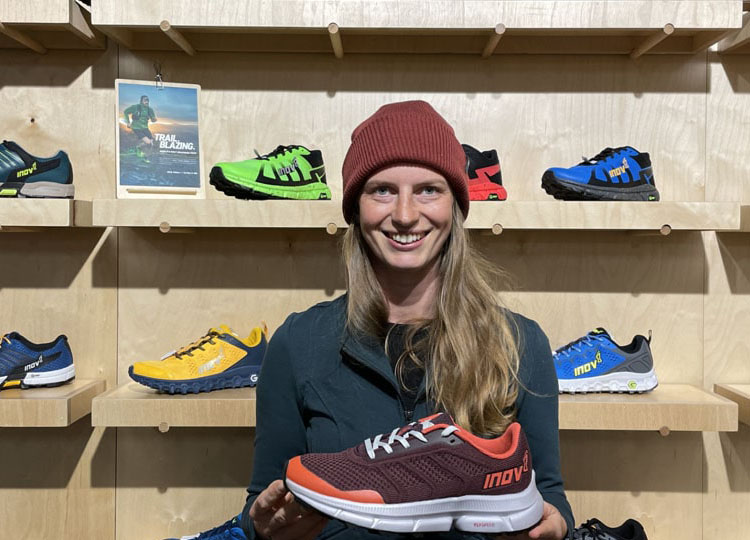
Launched in October 2022, the TRAILFLY ULTRA G 280 trail running shoe is our first-ever to feature a nitrogen-infused foam midsole. It helps give runners a lighter, softer, bouncier cushioned ride along with more underfoot trail control.
But what went into the design and development of this exciting new shoe? We talked to Bodil Oudshoorn, our Footwear Product Manager, to get the lowdown.
In terms of the design, what is uniquely new in the TRAILFLY ULTRA G 280?
The headline news is the new foam midsole infused with nitrogen gas, which we’ve called FLYSPEED.
We always aim to design shoes that mean the runner does not have to compromise. We did it previously when launching G-GRIP Graphene rubber (eliminating the need to choose a sticky, grippy rubber & a durable one and instead delivering both). And then when launching the ADAPTER-FLEX groove (eliminating the need to choose between max cushioning & flexibility and instead delivering both). These two technologies are included in the design of the TRAILFLY ULTRA G 280 plus the new FLYSPEED foam (eliminating the need to choose between a softer cushioned foam & the high energy return usually reserved for firmer foams and instead delivering both). It means the runner can get both comfort and speed from the new shoe.
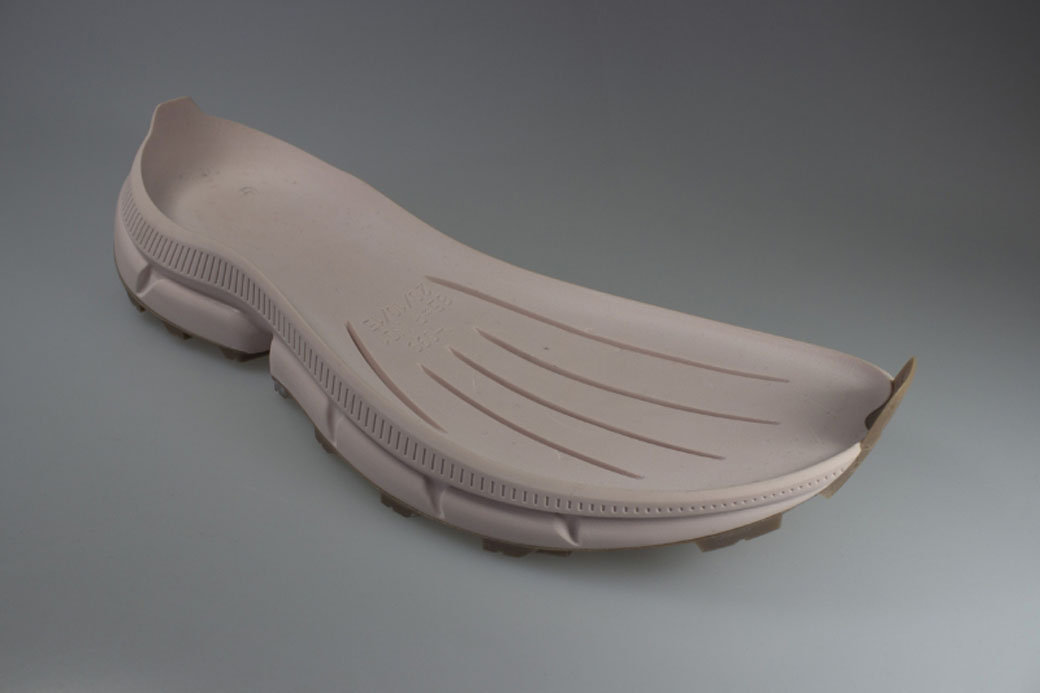
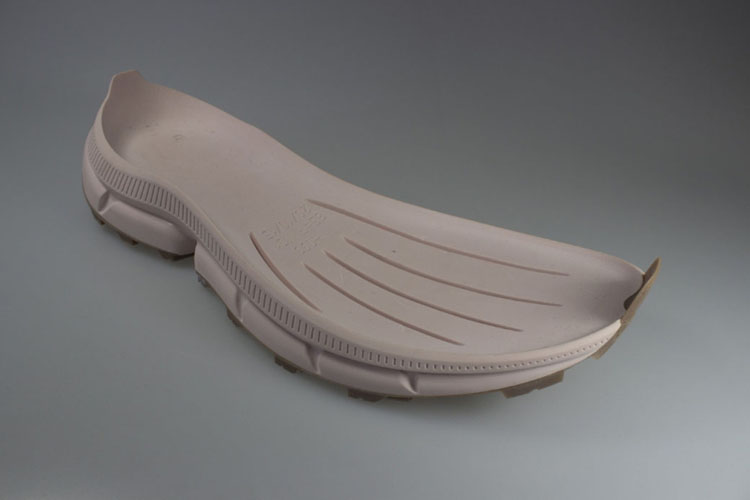
A resin model representing the design of the midsole in a solid form. This is a critical part of the design process, moving from two-dimensional drawings to three-dimensional geometries.
So, what is a nitrogen-infused midsole and how is it made?
Nitrogen is a gas. We’ve infused it with our base midsole foam to create this new type of foam, which we’ve called FLYSPEED. The foam is made using a supercritical foaming process, which is an innovative way of making midsole foams.
This process involves infusing either carbon dioxide or nitrogen gas with a base foam to create a mix. We’ve chosen to use nitrogen gas, which is less common, more premium and creates a foam with greater durability.
Is the process safe?
Yes, it is very safe and made by experts in the field.
All midsole foams are made using blends of materials, with chemicals added. Using nitrogen gas considerably reduces the need to use chemicals and energy in the manufacturing process. Instead, nitrogen naturally expands in bubbles to form the midsole (instead of the chemicals you’d otherwise add), giving an estimated 50% energy saving during the expansion phase. Any surplus gas is recovered and re-used.
All foam mixes are different, and our exact mix will remain top secret.
It’s also worth adding that the factory where FLYSPEED is made is moving to 100% sustainable-use energy and, in the future, will not use any from the grid.
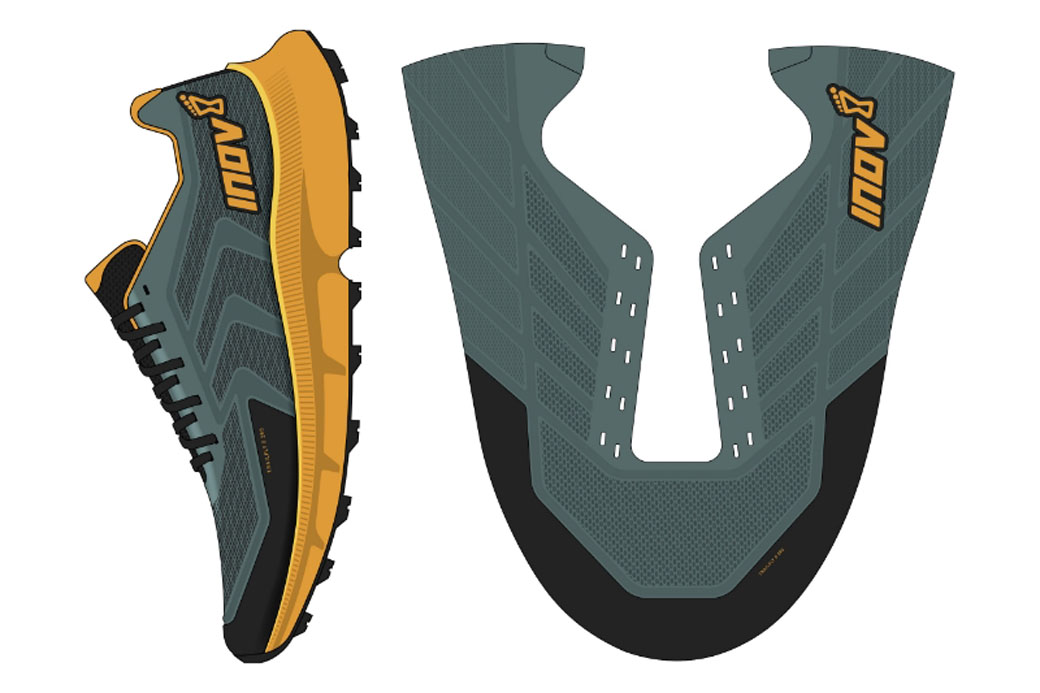
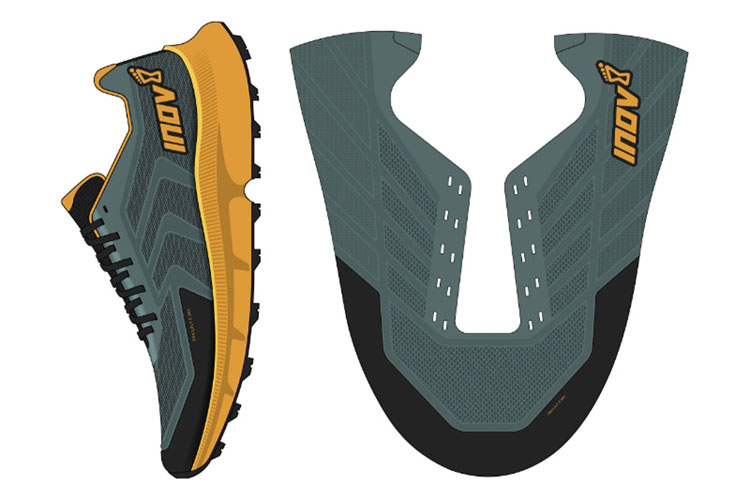
A detailed illustration displaying some of the components of the new TRAILFLY ULTRA G 280 shoe.
Why have you called the new midsole FLYSPEED?
The midsole foam is very light, thanks to the use of nitrogen versus chemicals. It also has incredible rebound and is our softest foam to date. Testers told us it makes them feel like they’re flying fast, hence the name FLYSPEED.
A harder foam will usually increase rebound but in turn make it feel stiffer underfoot. A foam that is very soft will sap energy away rather than rebounding. FLYSPEED foam with nitrogen delivers rebound AND a soft feel.
How does the nitrogen-infused foam compare to the G-FLY foam in the TRAILFLY ULTRA G 300 MAX?
The new FLYSPEED midsole foam is lighter and softer. This lightness is reflected in the overall weight of the shoe (a 280g average across the size curve versus 300g in the TRAILFLY ULTRA G 300 MAX).
Using Graphene in G-FLY foam means that foam utilises the powers of the world’s strongest material, thus making it our most durable.
In terms of energy return, our laboratory testing shows that FLYSPEED foam gives back 65%-68% of the energy you put in. This is marginally more than G-FLY foam (62%-65%). Standard EVA midsoles give back 45%-48%.
Nitrogen-infused foams are helping athletes break records around the world and have proven benefits to runners of all abilities.
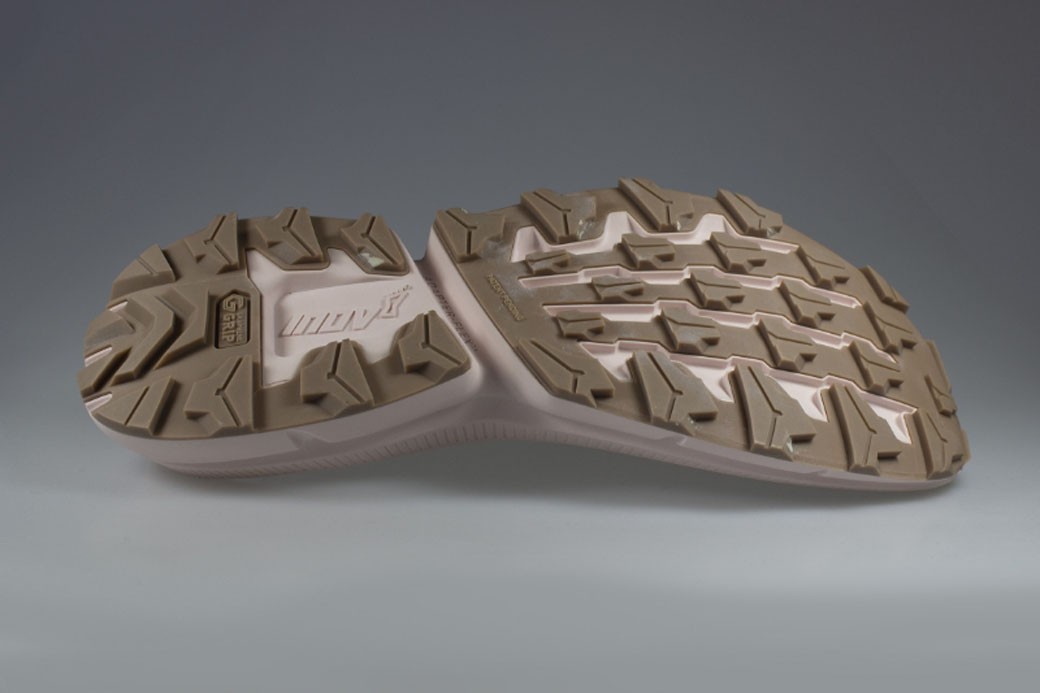
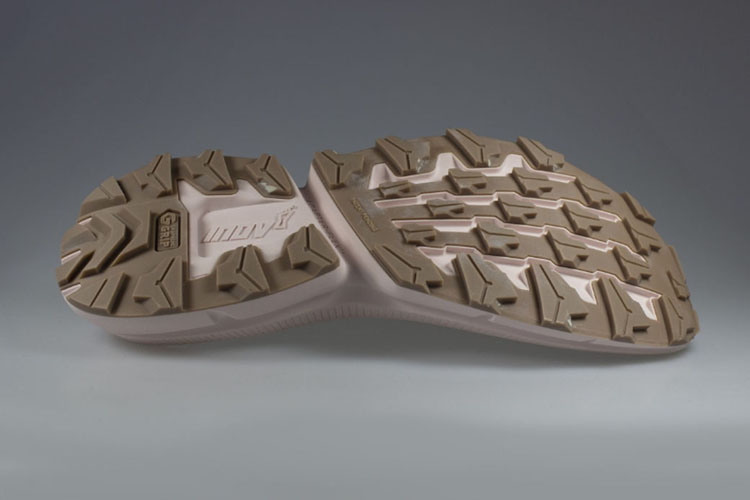
A resin model representing the design of the outsole in a solid form. This is a critical part of the design process, moving from two-dimensional drawings to three-dimensional geometries.
Why is the depth of the ADAPTER-FLEX groove 2mm less on the TRAILFLY ULTRA G 280 vs the TRAILFLY ULTRA G 300 MAX and what benefit does this technology bring?
The overall stack height is slightly lower in the 280 so we made ADAPTER-FLEX slightly less deep to reflect this. Furthermore, the FLYSPEED foam is softer which makes the shoe naturally more flexible, reducing the need for deeper flex grooves.
Having this flexibility in the TRAILFLY ULTRA G 280 means the shoe grips amazingly well off-road, because the sole can mould and shape to uneven terrain. By shaping to the terrain, you further lower the stress on your joints, because the flexible sole allows your shoe to absorb the bumps and lumps on the trail. Think of it as built-in suspension!
Finally, having a flexible sole also helps you maintain a natural gait, where your foot can control the shoe, not the other way around.
Talk us through the choice of materials for the upper and how this influenced the design?
We wanted to create a shoe which runners would love for its comfort and performance. We chose an engineered knit because it allows for breathable and supportive zones that are tailored specifically in areas where you need it.
The breathable zones are found at the top of the shoe where your toes are and through the tongue area. Heat rises, so these areas let the heat out to keep your feet at a nice temperature. The structure is in the midfoot, so that when you pull your laces it means your foot feel securely locked into your shoe. The knit also gives you get a little bit of stretch, which is especially nice if your feet swell on long runs.
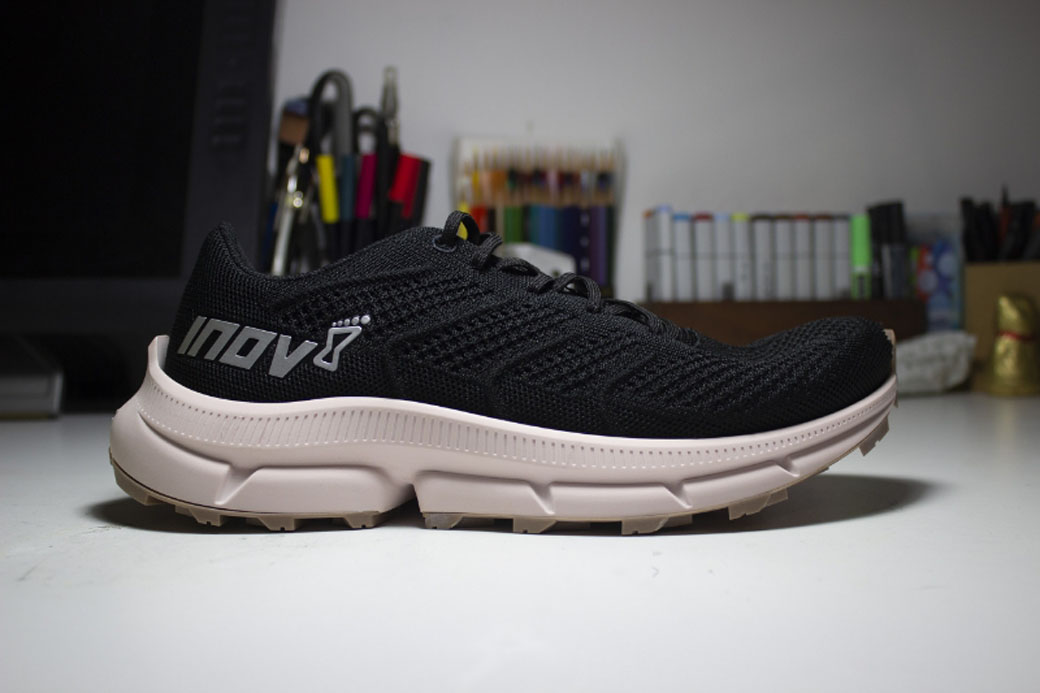
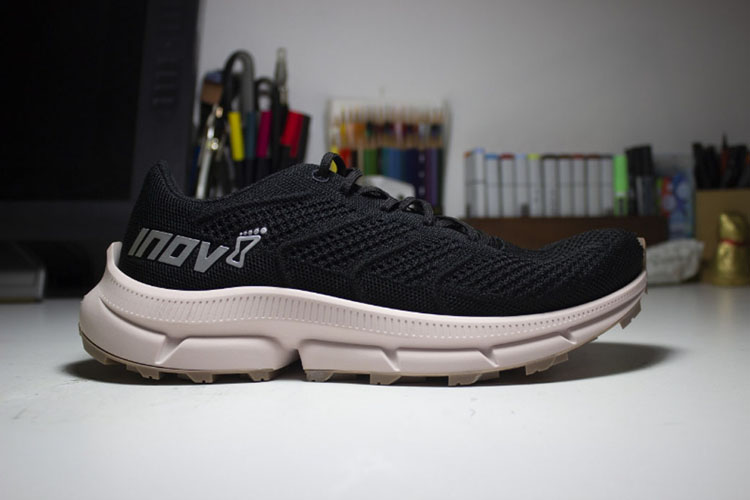
A prototype of the TRAILFLY ULTRA G 280, with a sample upper pattern sitting on top of the resin model midsole.
And, of course, colours. Always a hot topic! How did you decide upon the three launch colourways for this shoe?
You wouldn’t even want to know how big of a topic this always is…. even when we know our shoes will likely get muddy or dirty pretty quickly! For this new shoe, we wanted to create colourways which were both wearable but also showed off how light and energetic the shoe really is. We choose bold colours for the midsoles because it’s the really special feature in this shoe and we wanted it to catch the eye.
What about testing. Can you talk through the testing process for this shoe and how extensive it was?
A lot of the development for the TRAILFLY ULTRA G 280 was about the midsole foam. We tested this both in the field and in the lab to ensure the foam was performing as we intended, and that the bouncy feel also lasted a long time, to help our commitment in sustainability.
A lot of the new midsole foams used in road running shoes only perform for a very short distance before they lose their powers. We focussed our testing programme on getting the mix of performance and durability just right so you can use these shoes on many long-distance trails (or just for many, many more shorter runs!)
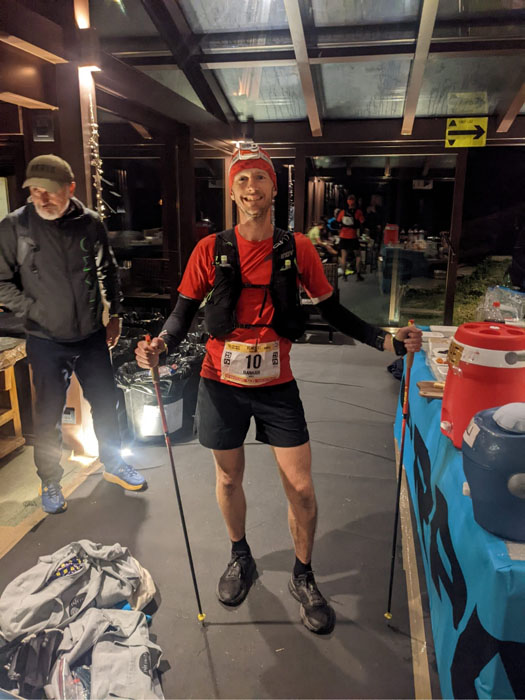
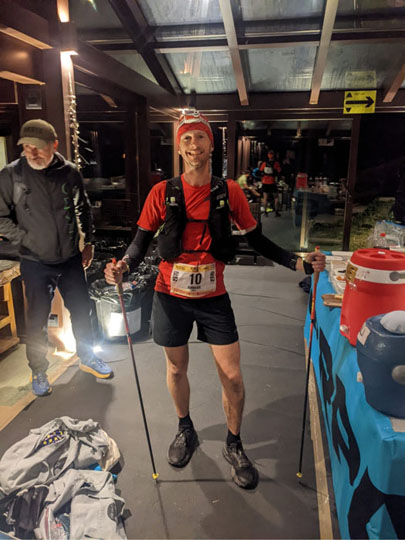
INOV8 ambassador Damian Hall completing a 330km race in the Italian Alps in prototypes of the new TRAILFLY ULTRA G 280 shoes.
Are the new shoes designed just for longer distance trail running or can they be used for all distances?
As proven with the 270 and 300, our TRAILFLY shoes work brilliantly over all distances. The 280 is no different. Although designed to ensure a runner can go long distances with all the performance benefits required to do so, the 280 will happily speed you over shorter trail runs too.
Why don’t the new shoes have a BOOMERANG footbed?
The BOOMERANG footbed is in the 270 and 300 shoes, but we opted for a standard footbed in the 280 because the shoe already possesses high levels of comfort and bounce, thanks to the new FLYSPEED midsole. A runner seeking even more, could easily add the interchangeable – and slightly heavier – BOOMERANG footbed.

